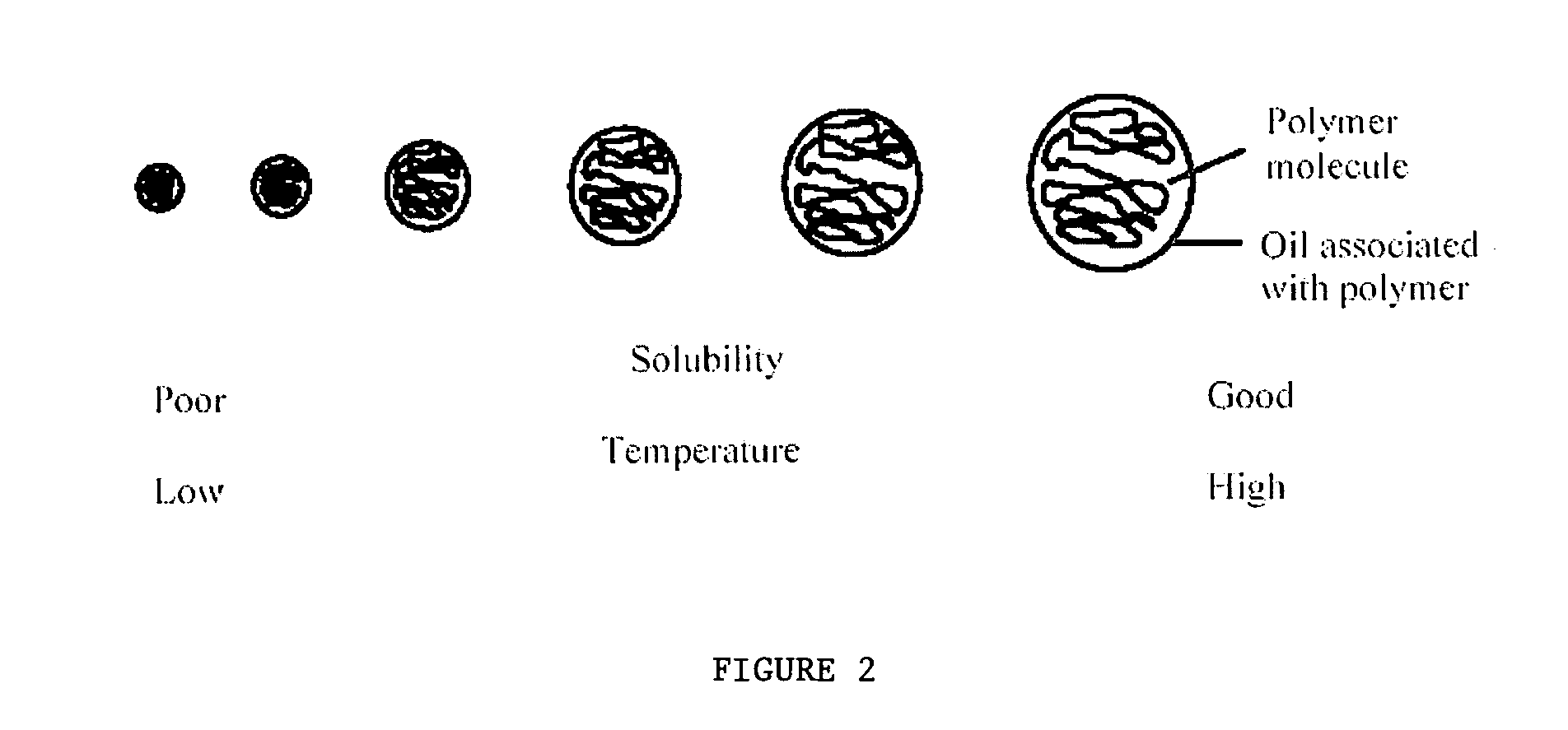Use of nanomaterials as effective viscosity modifiers in lubricating fluids
- Summary
- Abstract
- Description
- Claims
- Application Information
AI Technical Summary
Benefits of technology
Problems solved by technology
Method used
Image
Examples
example 1
Automatic Transmission Fluids and Viscosity Data
[0111]
ATFABCDE*From ConcentratePaste APaste BPaste CPaste DN / AKinematic viscosity at7.5519.6810.837.487.15100° C., cStKinematic viscosity at28.4429.3228.7727.8533.6740° C., cStViscosity Index254634395257183
*E is an off-the-shelf regular commercial ATF (MERCON V).
example 2
Engine Oil
[0112]
ProductConventionalNanoparticle-containingEngine OilEngine oilCompositionValvoline90% DURABLEND 5W-30DURABLEND 5W-309% DURASYN 1621% GraphiteProcessBulk graphite is pulverized, andmilled in DURASYN 162 to obtaina paste. The paste is added toDURABLEND 5W-30Viscosity10.6610.90@ 100° C.Viscosity61.1454.34@ 40° C.Viscosity166197Index
example 3
Shock Absorber Oil
[0113]
ProductConventionalNanoparticle-containingShock OilShock oilCompositionVISTA LPA62.4077.70210LUBRIZOL36.8720.667720CLUBRIZOL0.300.305186BTricresyl0.220.22phosphateF-655C0.20defoamerBlue Dye0.010.01Graphite1.11ProcessGraphite obtained as powders(UCAR), and milled in VISTALPA 210 / LZ 7720C to obtain aconcentrate. Then the otheringredients are added tomake the final formulationViscosity8.977.77@ 100° C.Viscosity29.7512.45@ 40° C.Viscosity307732Index
PUM
 Login to View More
Login to View More Abstract
Description
Claims
Application Information
 Login to View More
Login to View More - R&D
- Intellectual Property
- Life Sciences
- Materials
- Tech Scout
- Unparalleled Data Quality
- Higher Quality Content
- 60% Fewer Hallucinations
Browse by: Latest US Patents, China's latest patents, Technical Efficacy Thesaurus, Application Domain, Technology Topic, Popular Technical Reports.
© 2025 PatSnap. All rights reserved.Legal|Privacy policy|Modern Slavery Act Transparency Statement|Sitemap|About US| Contact US: help@patsnap.com



